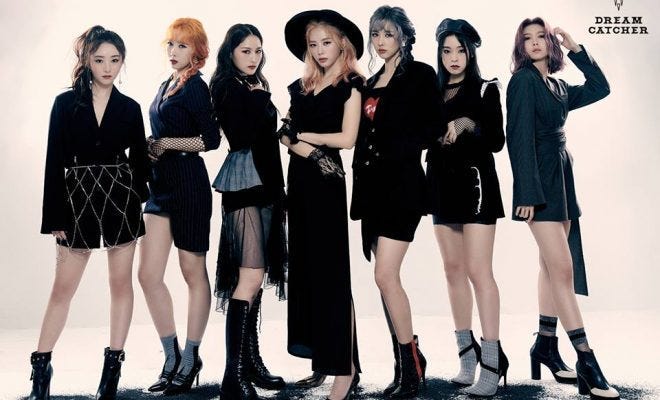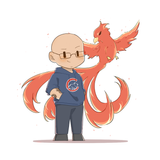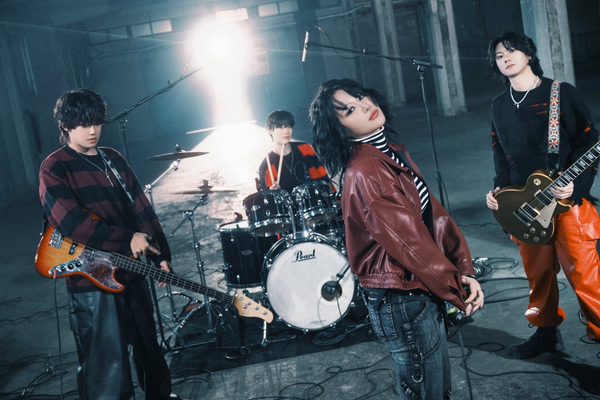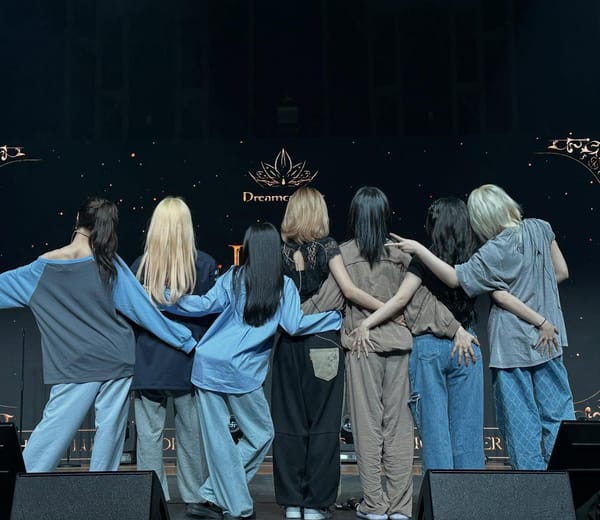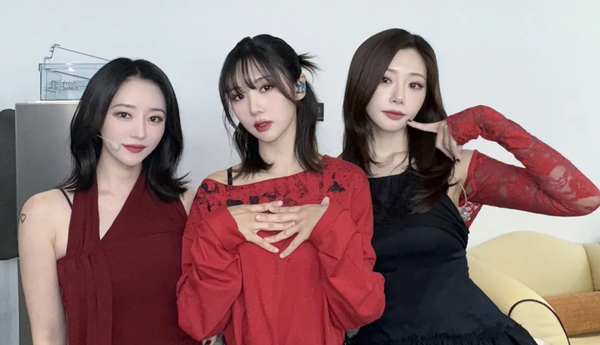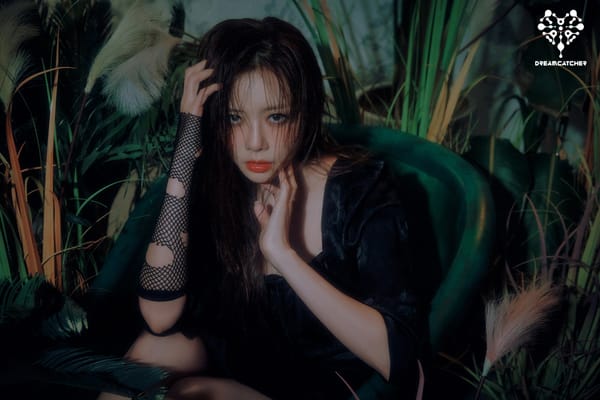Dreamcatcher Is K-Pop’s Increasingly Well-Known Underdog Story
K-pop fans may finally be waking up to Dreamcatcher’s unique rock-filled, nightmarish, and dystopian sound.
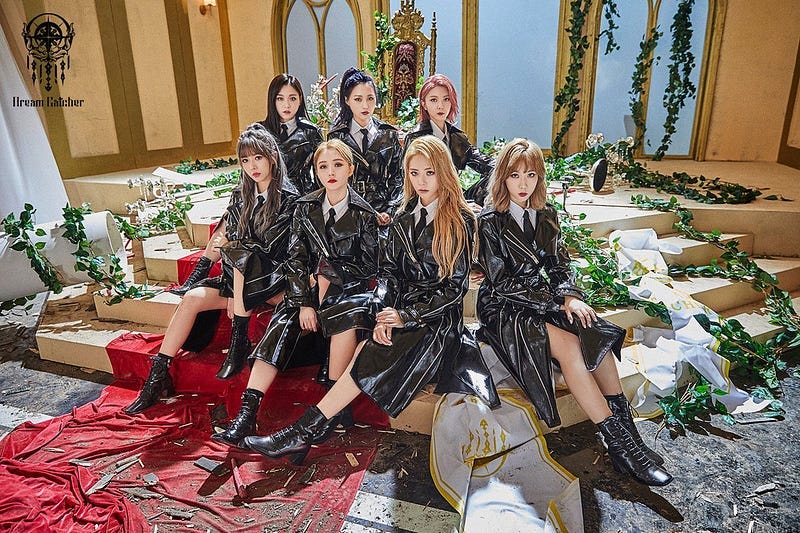
In the high octane, seemingly endless entertainment carousel that is Korean pop (more colloquially known as “K-pop”), it can get easy to get overwhelmed by the sheer spectacle of the industry. Filled with endlessly practiced, tight dance choreography, a visual presentation meant to simultaneously entertain and attract, and a combination of both obvious and subtle marketing of talented idols and songs, K-pop draws you in like a black hole, using the universal language of music to draw you into its crushing, yet catchy-sounding embrace. In K-pop, the target goal for an artists’ audience isn’t just to be a casual fan, but a to be a loyalist for the idols you appreciate and forge a connection with, whether that is through the music, through the personalities, or ultimately, through tangible support, whether that be through album purchases, voting on music shows, or just general word-of-mouth gushing about who you’re into.
As a result, the K-pop industry is a hyper-competitive one. Artists jockey for fan attention, exposure, personal success, and ultimately, financial solvency for themselves and the companies they represent. Companies both large and small throw around marketing campaigns, send their idols out to public show appearances or let the idols themselves conduct more intimate livestreams to check in with their fans. And not every group or artist can survive such a battle to acquire and keep fans. Not everyone, for example, can be a BTS or a Blackpink (groups that have broken the barrier to the West in big ways), or a TWICE or an EXO, (reliably popular groups on the South Korean/Asia domestic front).
Given this environment, as a company or a group looking to garner success in this industry, you can take one of two roads. You can choose to follow the current trends and best practices in K-pop music, banking on an effort that sometimes succeeds through a combination of good marketing, the hard work of artists, and a lucky set of “right place, right time” circumstances that propel them to higher echelons of popularity. Many groups follow this road, to varying degrees of success and it’s safe and somewhat proven. But a select few choose to go in another direction entirely, operating outside the norm, trying different things both musically and from an idol standpoint. It’s the harder, less-traveled road, but sometimes, in a crowded industry, it’s the only one available to you.
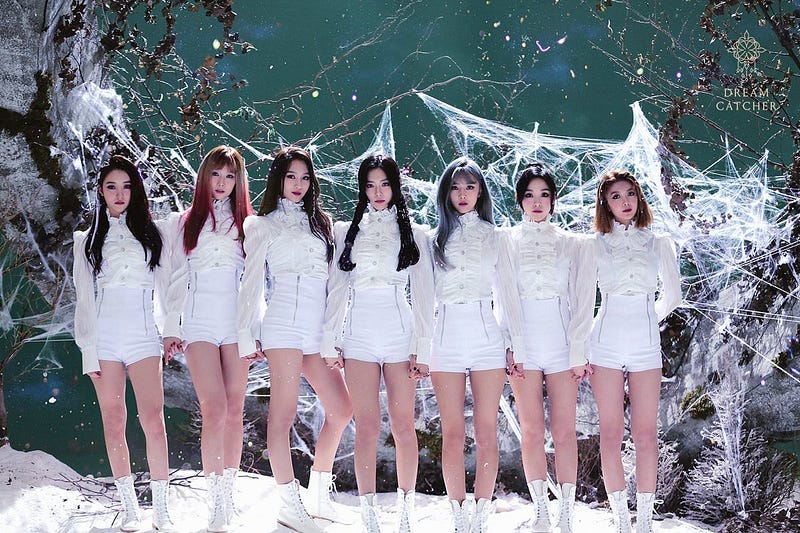
Dreamcatcher, a seven-member girl group that’s had members that have been in the K-pop industry since way back in 2014, is one that’s taken this latter road, utilizing a non-traditional core of rock/pop that has more recently been hybridized with popular K-pop genres to create a unique sound much different than K-pop’s tried and true choices of cute/sexy/peppy music. But it isn’t just their music that makes them different — the road they’ve taken career-wise hasn’t been an easy one at times, and it’s been fraught with perils and obstacles that probably would have spelled disbandment for any number of other groups. Their journey, as a result, has earned them the notoriety of being one of K-pop’s underdog stories, perennially called underrated and depending on who you talk to, underappreciated. The common phrase uttered by fans has become “Sleep on beds, don’t sleep on Dreamcatcher”, which, considering the group’s name, and fan club name, is highly appropriate.
There are other underdog stories in K-pop, some of which have broken through to enjoy deserved commercial success, but it’s my opinion that Dreamcatcher’s has become one of the most well-known in recent history, mostly because it’s still an ongoing one. Even today, Dreamcatcher oftentimes plays David to K-pop’s Goliaths, and it’s only recently that their efforts have finally seemed to garner the attention of the larger K-pop fanbase, especially domestically. But whether purposefully or by coincidence, that might just be a part of their charm to their smaller, but steadily growing fanbase and their story is well worth looking at, for many reasons. Here are a few of them.
Dreamcatcher wasn’t always Dreamcatcher.
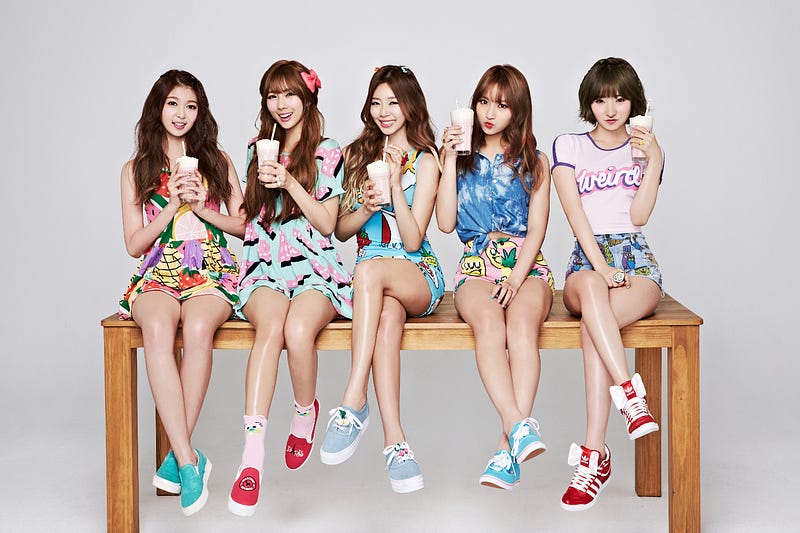
The road to debut in the K-pop industry is a long one for many aspiring idols, filled with auditions, signing with a company, and long days, months, and years practicing, training, and being educated in the essential skills necessary to succeed. Only a small number of trainees are chosen by a company to debut as soloists or more commonly, groups, and even then, success is by no means guaranteed. If a debut doesn’t catch the eyes and ears of K-pop fans both domestic and international, it can spell disaster for idols’ prospects even before it can get properly started. This was the fate that most of the members who would eventually be known as Dreamcatcher narrowly avoided.
In 2014, Happyface Entertainment debuted their brand new girl group MINX, banking on perceived talent from members JiU, SuA, Siyeon, Yoohyeon, and Dami to appeal to fans through a blend of peppy, high-energy beats and just a dash of rap and hip hop. The concept, or accompanying image in K-pop that was being portrayed to audiences, was undeniably in the “cute” category, with brightly colored outfits and constant smiles from the members as they sang about wanting and finding romance, wondering why the heck the pizza guy was at their door, and relaxing on the beach.
It was, perhaps, one of the safest places to debut a new girl group for a company that was from all indications decently funded but perhaps taking a bit of a conservative approach following a bit of a mess involving one of their other girl groups. Dal Shabet, another girl group under the label, had taken heat only a year ago for “Be Ambitious”, a song that ended up having to have its rather risque lyrics changed, its perceived scandalous choreography removed, and even an injunction brought against the company for what it was thought of to be degrading towards men, women, and the military.
So you can see why MINX, fresh out of their trainee packaging, wasn’t quite as “ambitious”, and put themselves squarely in the slow driving lane, going for the more innocent, cutesy side of young love, hoping to not make the negative waves their seniors in the company did, all while hoping to stand out through a combination of talent and catchy tunes.
The problem with not making negative waves, however, was the consequence that MINX ended up not making any waves at all. The mini-album that would contain “Love Shake”, MINX’s 2015 effort to capture the annual desire for K-pop fans to find that one memorable summer bop of a song, sold a decidedly dismal 1,813 copies according to the Gaon album chart in South Korea. Sure, MINX and “Love Shake” were attaching themselves to a tried and true (and thus less risky) cute concept, but they ended up being lost in the shuffle.
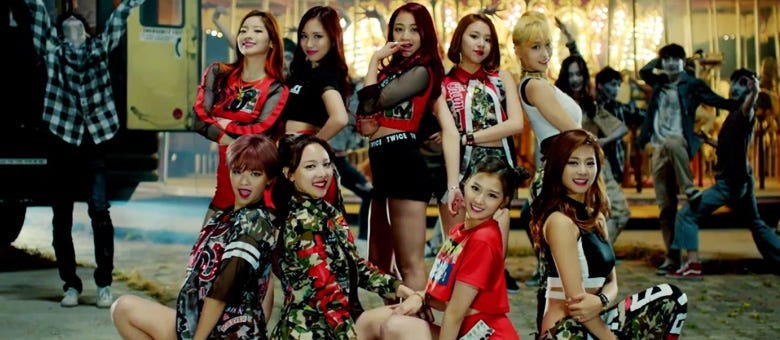
A literal ocean of similar innocence and brightly colored summer clothes and songs, done by groups with either a bigger company presence, resources, and marketable talent pool (TWICE) or by groups that simply had the right mix of circumstances, unforgettable lyrics, and a stunning visual presentation (GFriend) managed to capture the attention of the K-pop listening public. This left MINX driving down the K-pop industry highway at a leisurely pace while others were passing them up on both sides of the road, and in an industry filled with groups jockeying for position to be noticed, appreciated, and ultimately, financially supported, leisurely made MINX looking like they were going too slow. And so, after “Love Shake”, Happyface Entertainment took a step back to decide what to do with MINX.
In a lot of cases, badly received debuts are a death knell for a group, for many reasons — some because the company isn’t able to expend more money to put into the group, others because the company doesn’t feel like they’re being received well and thus abandon the effort to market them to the public. To idols, who train for years to get a chance at success in the public eye, this can be a difficult, even devastating experience, and MINX was apparently no exception. In an interview with BNT news in 2017, main vocalist Siyeon refers to the experience as a difficult one:
Just thinking of then, my eyes would turn red. During that period, all of the members (MINX), fell into a slump severely. I refused to and hated to listen to any kinds of songs. Every time I laid in bed, I cried a lot. I did not want to say this, but at that time, I would go to the cyber cafe with Yoohyeon to play “League of Legends” to relieve stress.
Not surprisingly, the members worried that their company might soon pull the plug and disband them.
But it was at this point, with MINX one foot in the K-pop debut graveyard, that Happyface Entertainment decided to go down a road with the group that would become an underlying theme in what is now from all indications a modestly commercial success. According to Happyface Entertainment’s CEO at the time, Lee Joo Won, that theme would be “doing what others don’t do”:
Since competition was fierce, we didn’t get results. We thought that we wouldn’t be able to see the light with this kind of concept, so we thought a lot for a long time. Eventually, we changed tracks. We came to the decision that we should do concepts that others weren’t doing. We decided internally to try again with a girl group style that didn’t exist in Korea, a girl group concept that didn’t happen very often. The five members of MINX, at the time of their debut, had all received praise, and had had a long trainee period. Because they were talented, we were confident that they would be able to take on any concept.
The company swapped the group’s style to a non-mainstream music style, a blend of rock, metal, and pop (more on that in a bit). Matching the visual presentation to the music, the group would embody nightmares, shelving the bright pastel colors for uniformly dark and gothic-inspired outfits with a touch of fantasy. Talent potential and choreography possibilities were widened with the addition of two other promising trainees — Gahyeon, an all-around talent who would become the maknae, or youngest, member of the group, and Handong, a Chinese-born vocalist with a deeper, richer, register to her singing.
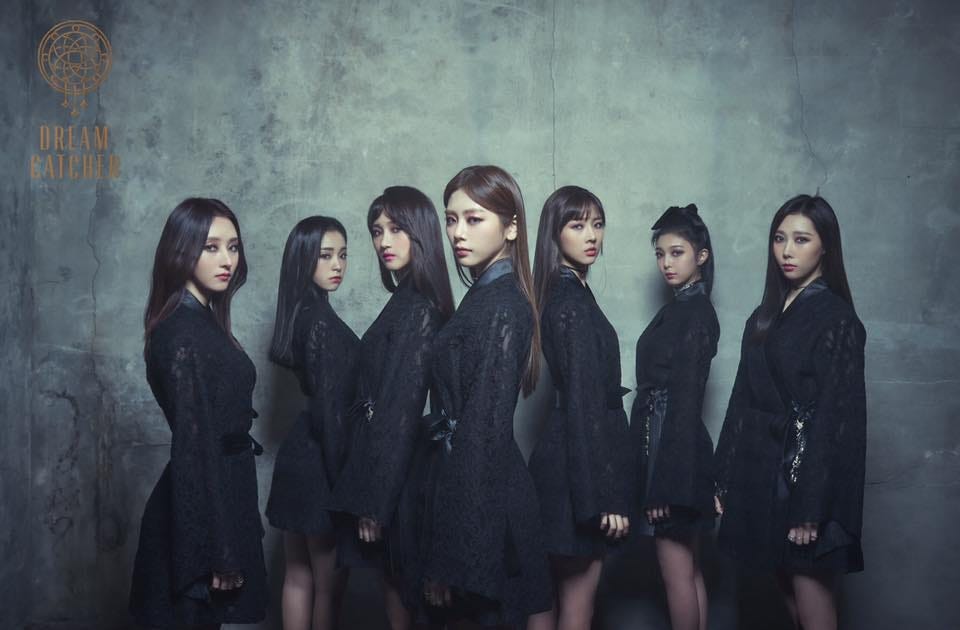
In short, Happyface Entertainment, and by extension, this newly formed girl group filled with potential and talent the company recognized, quit playing it safe. They didn’t just stop with burying MINX in the graveyard — they raised them back from the dead, Altered Beast style, as Dreamcatcher, and they never really looked back.
This was a bit of a long history lesson, but the point in showing this as it relates to Dreamcatcher’s underdog story is to highlight that from the beginning, Dreamcatcher’s members survived what would have spelled the end for any number of other groups that fell flat on their debut. In true underdog fashion, they were expected to lose out and ended up breaking out of near-certain defeat to get some new life. But even then, success wasn’t immediately guaranteed. In the world of K-pop, re-debuts are extremely uncommon, much less those that involve an entire group into a completely different concept. Speaking of which…
Dreamcatcher rocks out where others wouldn’t.
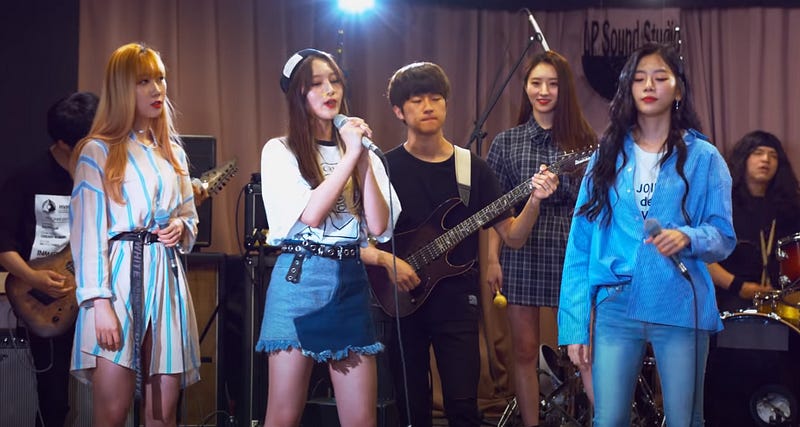
If Happyface Entertainment was committing to this re-debut of what would now be called Dreamcatcher, they were going to do so from the bottom up, starting with the core of their music. Playing to both member preferences towards the rock genre and their desire to break the mold, Dreamcatcher re-debuted in January 2017 with “Chase Me”, a hard-hitting, aggressive song with as much guitar, rock, and metal as it had the catchy pop sound that has typified much of the K-Pop genre for the past decade.
In picking rock and metal as the basis for their sound, Happyface Entertainment and Dreamcatcher put themselves on a less-traveled, and thus less immediately popular, road. Even in the greater popular music scene these days, rock is not immediately the genre you would think of to be at the top of the charts. That crown belongs squarely in the R&B, rap, and hip hop genres, who along with general pop sound have ruled the roost in the Billboard Hot 100 for the last couple of decades. In South Korea, rock and metal are even less present in popular music culture — rock efforts by artists, especially those in the K-pop arena, have been relegated to interesting side experiments, and metal itself is considered most certainly an underground scene, overshadowed by K-pop’s constant presence. The few K-pop acts that do work directly with rock are boy groups, with Day6 (one group that Dreamcatcher is unsurprisingly fans of) being one of the most prominent.
So when Dreamcatcher, already going through the risk of a re-debut, made their choice to embrace a genre not often seen in K-pop, they knew they were in for an uphill battle from a marketing and establishment standpoint. In the K-pop genre, it is of utmost importance to be able to stand out from the crowd to build your fanbase. Having failed to do so through the tried and true formula, Dreamcatcher took the formula, smashed it on stage as a stereotypical rock guitarist might do with their instrument, and started all over again, this time in a concept and accompanying genre that the members, if not already interested in it beforehand, were certainly feeling more comfortable working with. And it showed — both in how the new rock/pop/metal core sound changed their videos and their musical depth and in a relentlessly aggressive matching choreography more seen in boy groups than in girl groups. Combine that with a horror-inspired storyline that saw seven seemingly normal girls cursed and reborn as nightmares (a nod, perhaps, to the real-life plotline that essentially killed MINX and raised Dreamcatcher from its ashes) and you had a risky, but unique formula to bust out of the normal K-pop mold.
Dreamcatcher’s re-debut album “Nightmare” sold a modest 3,576 copies, which when compared to the barely 1800 that “Love Shake” managed to move, seemed like a boon. Sensing some momentum, Happyface Entertainment and Dreamcatcher put some pedal to the metal. Not even three months later, “Fall Asleep in the Mirror”, Dreamcatcher’s April follow-up album anchored by an even heavier rock track in “GOOD NIGHT”, almost tripled album sales at 9,274 copies. “Prequel”, releasing in July and fleshing out the nightmare story by going back to the beginning of it with the innocence-turned-to-darkness visual of “Fly High”, ultimately sold 11,268 copies. Fans looking for something different in their K-pop diet were finding it in Dreamcatcher — especially on an international level, where Dreamcatcher’s signature rock sound was more likely to be received at a faster pace.
The plan, however unorthodox it may have seemed at conception, appeared to be working, especially when it began to be combined in 2018 with a strategy Happyface Entertainment intended from the beginning — have a group that, much like rock bands both classic and modern, was able to reliably generate revenue through touring and holding concerts and not just through album sales and domestic promotion. Dreamcatcher’s travels would take them through South America, Europe, and even (briefly) the US for KCON 2018 in LA, as they toured, met fans who they dubbed “Insomnia” (in connection with their association with dreams), and played concerts to small, yet sold-out venues, where their relatively small discography was augmented by covers of songs originating in both Korea and the US.
Despite these little successes, however, it’s only really recently that Dreamcatcher has begun to have K-pop fans both domestic and international recognize and add to the Insomnia ranks. 2018 and the early part of 2019 saw fluctuating, yet overall rising, album sales (between 25,000–36,000) for delayed title track “You and I”, urban-fantasy inspired “What”, and the end of the nightmare storyline with “PIRI”. Happyface Entertainment, for its part, went all-in with their most profitable girl group to date via a sub-company creation of the aptly named “Dreamcatcher Company”. Then, newly minted and wanting to expand their reach, the company made the bold move to work with a mobile game developer, Vespa, to release a late 2019 title track in “Deja Vu” as part of their collaboration with the then-latest chapter of the“King’s Raid” game. The “Deja Vu" music video, tracked by user “nat1withadv” on Reddit, would surpass the total YouTube views of February 2019’s title track “PIRI” in two-thirds of the time it took “PIRI” to get there itself, and would end up being Dreamcatcher’s fastest music video to 10 million views. Dreamcatcher was beginning to be seen by more than their core fanbase — and it showed, as the group continued touring in 2019, completing visits to multiple cities in Asia, a quick stop through Australia, a second tour through Europe, and finally, a first through the United States, their fanbase waiting to shower appreciation on them in every location.
Meanwhile, not willing to let this new idea of reaching past Dreamcatcher’s core fandom sit idle, composers LEEZ and Ollounder began tweaking the rock core of Dreamcatcher’s music to include other genres, and after “Deja Vu” succeeded, they turned their work to the group’s first full album released in early 2020, “Dystopia: The Tree of Language”, which would not only allow the space for them and Dreamcatcher to expand boundaries but would also display that a title track like “Scream”, combining Rock and EDM elements, could blend more well-known genres in K-pop with Dreamcatcher’s now-signature rock sound.
As of this writing, Dreamcatcher is enjoying their most successful comeback and release yet, with “Dystopia: Lose Myself” and its title track “BOCA” smashing views and sales records (they’re currently at 47,000 albums sold and are likely to crack 50k, and the official music video is close to 20 million views, their fastest pace to that marker). By all accounts, despite all these non-traditional elements and continued reliance on an underused genre in South Korea, the formula appears to be working.
Sure, you can look at these album numbers and compare them to the tens (and sometimes hundreds) of thousands of copies that are moved by more domestically popular groups and think Dreamcatcher isn’t doing so well. But this slow and steady rise to fame seems to be fine for both the company and for the group, and honestly, it’s the price paid for squarely planting their foot in the rock portion of their identity. From day one of re-debut, Dreamcatcher has been fighting to display their skills in a concept that should normally not have a chance to succeed in the greater K-pop market. But that’s just a part of being an underdog — battling for every inch forward.
Dreamcatcher’s road to domestic success is an ongoing plotline.
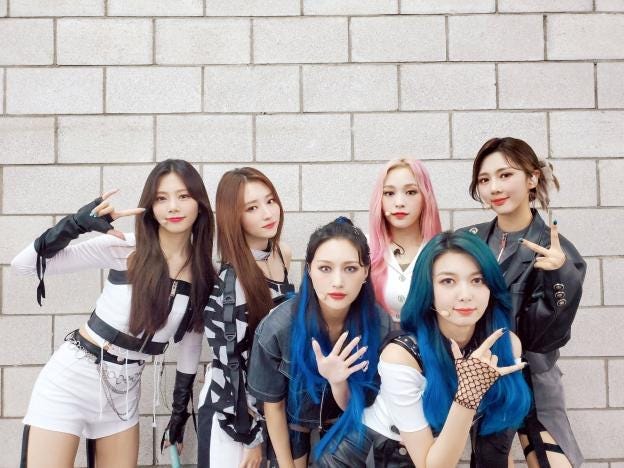
Dreamcatcher and Dreamcatcher Company know that their road to high-level domestic fame is a lot tougher for all the reasons I’ve been stating in this article. Though large strides have been made on this front since the group’s re-debut in 2017, and interest in Dreamcatcher is at an all-time high in South Korea, the group is still perceived to not be as well-known or popular as larger, more traditional groups in its generation or newer. In the K-pop industry, where fame and recognition can strike suddenly like a lightning bolt, Dreamcatcher still lacks that career moment when a massive breakthrough happens on native shores.
Whether it’s as simple as a hugely successful single (as it was for now-world famous BTS in 2015) or as random as a fancam gone viral (as it was for EXID in 2014 to save them from disbandment), these events can have a lasting impact on an act’s career. In lieu of these moments or the backing of one of the larger companies in K-pop, competition for attention and a limited (yet passionate) audience domestically can be fierce, and in no place is this more apparent than in the competition over music show wins on the various weekly programs.
A music show win, while not essential to a group’s success, is nevertheless one of the industry’s most visible tangible metrics of prestige and achievement. Scored in various ways depending on the show but typically taken from a combination of week-to-week physical album sales, fan voting, digital charting, streaming, and download numbers, nominated artists promoting new music through weeks-long comeback periods battle it out for a bit of hardware, but more importantly, the doors that can potentially open through being noticed through wins. On top of this, for artists looking to score music show wins, timing is suddenly a factor, as stronger 1st-week sales or a schedule against (or not against) a particularly known dominant group can be a huge factor in the likelihood of getting one.
For the idols themselves, that first show win can be seen as a milestone, a validation of years of work training, learning, debuting, and performing. It’s not uncommon for idols who get them to react emotionally to such an achievement.
This side trip into the ins and outs of music show competition is necessary to connect back to Dreamcatcher’s efforts to achieve higher levels of success domestically as well as internationally. It should come as no surprise, given all the information I’ve heaped on readers so far, that as of this writing in September 2020, Dreamcatcher has yet to achieve a music show win in four years — with the original MINX members waiting for it after six. Their steady rise to visibility in the industry, devoid of a flashpoint moment to spike popularity in South Korea, combined with their non-traditional music/concept, has meant competing for music show wins has always been a somewhat of a Herculean effort.
For instance, Dreamcatcher’s much larger international fanbase is unable to help affect crucial digital numbers on at least one of the main streaming and downloading platforms, Melon (the others being BUGS and Genie), due to its requirement for a South Korean phone number. Other times, the timing of comebacks has coincided with larger, more established groups or those with a much higher domestic following, such as IZ*ONE, and more recently, ITZY and juggernaut BTS. In yet others, understandable circumstances beyond Dreamcatcher’s control have blunted first win prospects (during August — September 2020’s promotions for new title track “BOCA”, music show cancellations due to COVID-19 concerns prevented Dreamcatcher from competing during their arguably strongest week for a show win).
But all this doesn’t mean Dreamcatcher hasn’t come close. Nominations and frequent placements in 2nd or 3rd place have shown up on multiple music shows, with a head-to-head battle with IZ*ONE on high-end music show M Countdown as one of the most recently visible achievements. And on SBS MTV’s The Show, Dreamcatcher’s best chance at winning due to larger groups eschewing its live performance requirement in favor of more prestigious music shows, Dreamcatcher has reached to the edge of victory 8 times, the closest being a mere 12 points away against rookie group Everglow in late 2019, a win marred somewhat by an apparent scoring controversy that has never been fully explained, but which by some explanations would have given Dreamcatcher that coveted first music show win (Everglow, regardless of this, deserved that win for their hard work).
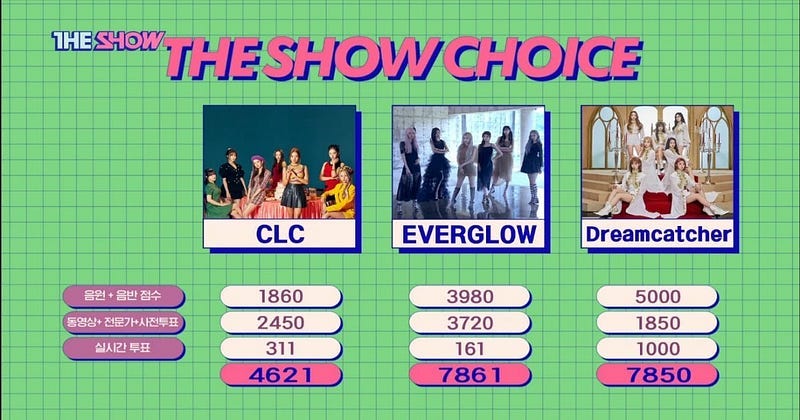
It’s important to note that communicating this information is not meant to create guilt or a pity party for Dreamcatcher. Like any artist, Dreamcatcher has expressed the desire to get this win, for the reasons I stated earlier, but by all indications are fine with soldiering on as they are. If the group was bothered by coming so close to music show wins and not achieving them as of yet, they haven’t really shown it. If for nothing else, I’d speculate that part of this reasoning is they knew what they were getting into, understanding it was going to be a bit harder, but are much happier than they could have been going down the normal road to K-pop fame, for the simple fact that they are producing music they love.
The point, as with the other portions of Dreamcatcher’s story that we’ve looked at during this article, is to highlight how the non-traditional road traveled by Dreamcatcher has created unique challenges in achieving career success and notoriety in a heavily competitive K-pop industry. These are, of course, challenges that Dreamcatcher feels they are more than up to meeting, and ultimately knocking away like most of the others they’ve already encountered in their road. When 7th member Handong (who’s currently in China longer than usual due to COVID-19 travel restrictions after working on Chinese idol survival show “Youth With You”) returns, Dreamcatcher’s journey will continue at full strength, even if it’s a story that is frequently cast in an underdog role.
Dreamcatcher’s potential future — underdog no more?
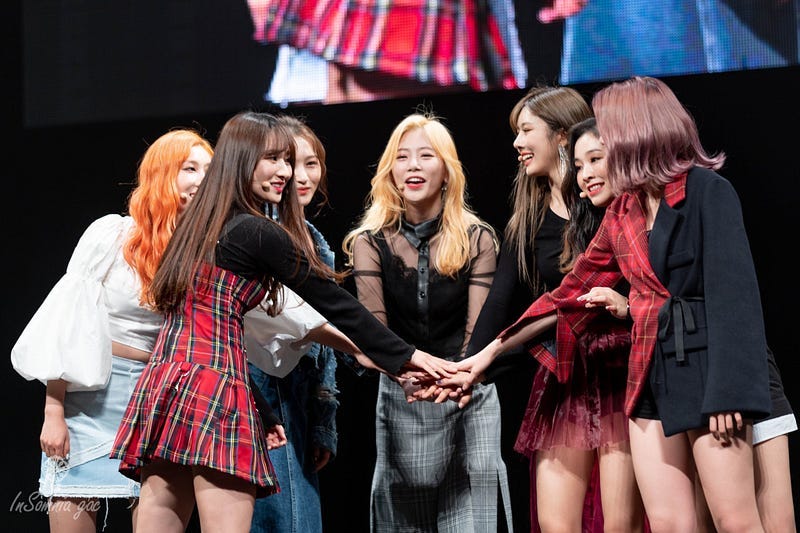
That underdog role, and that story, by the way, is one that appears to finally be catching attention both domestically and internationally in 2020, for a number of reasons. Dreamcatcher’s first full album “Dystopia: The Tree of Language” was a huge success by Dreamcatcher company standards, with followup mini-album “Dystopia: Lose Myself” on pace to build upon and exponentially expand the fanbase. The timing of release and comebacks, while not so conducive to first music show wins, has had the arguably better consequence of having fans waiting for their more popular favorites to go on stage get some eyes and ears on Dreamcatcher. In my travels around the comments sections, Twitter threads, and general K-pop fan forums that exist on the internet, one theme as it relates to Dreamcatcher’s recent work is the thought from some commenters that they “hadn’t heard of Dreamcatcher before, but will be sure to follow them with interest”. The results of that, and the conversion of those curious commenters into full-blown Insomnias, speaks for itself, if for nothing else in raw social media numbers.
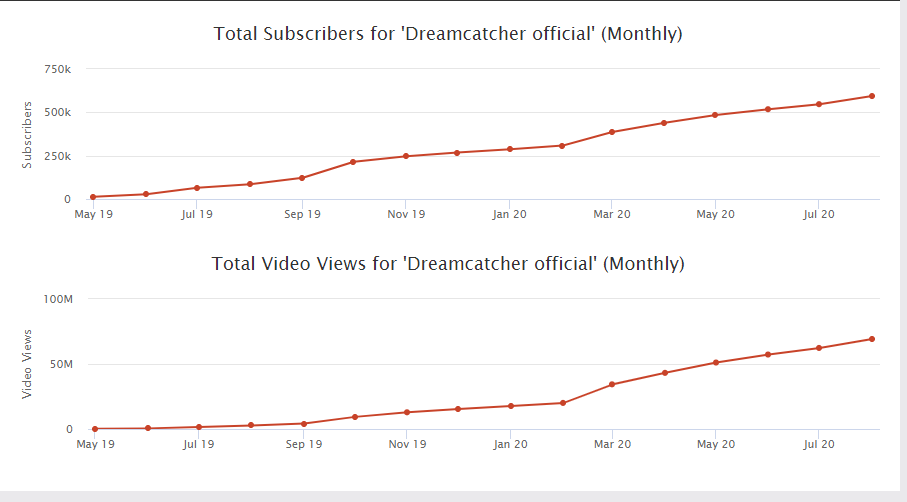

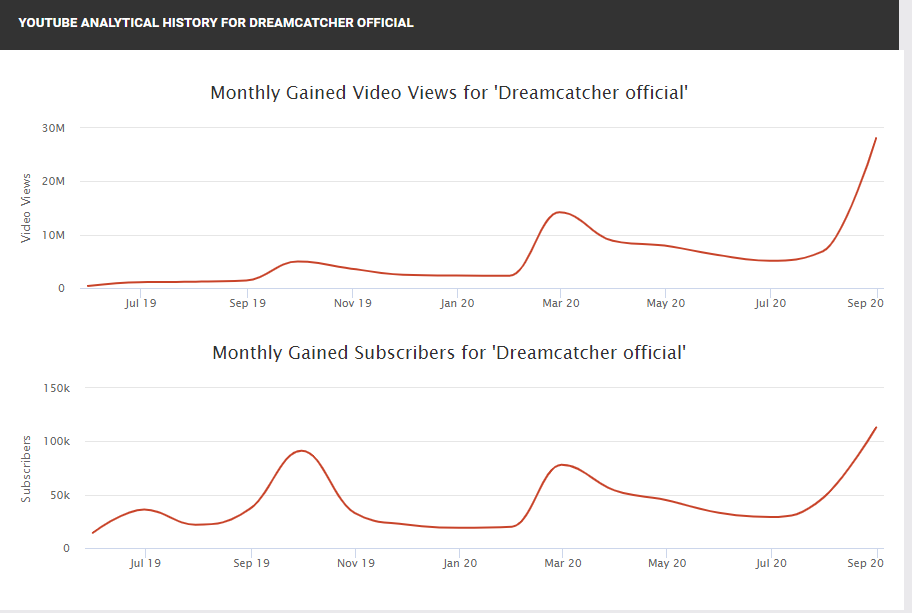
Despite the fact that this group had to rise from the ashes of a failed debut, uses a concept that doesn’t fit the general K-pop mold, and hasn’t yet acquired the level of domestic success that would give them a consistent chance put up against their peers with larger followings, Dreamcatcher’s brand recognition is growing, steadily if not exponentially, with every comeback. With that comes more awareness of the group’s long journey from obscurity to a place where, despite being the underdog at times, they’ve carved a niche for themselves on their terms. It’s definitely garnered the respect of their peers and the endearment of a fanbase aching to give them the recognition they feel they’ve deserved and is long overdue.
Will Dreamcatcher, like any storybook underdog you hear about in books, movies, and other media, finally see their hard work and the years-long difficulties they’ve endured pay off? Will they instead remain one of K-Pop’s better known, yet still underdog-level groups in comparison and competition to their larger, more industry-standard peers? Time will tell, but either way, you can count on Dreamcatcher to continue to make their own way in the K-pop world, plying their unique blend of rock, metal, and pop genre music, building fantasy worlds and plotlines and providing the sharp, aggressive choreography to match. Most of all, they’ll do it for whoever chooses to appreciate and recognize them for not just what they’re doing, but how they got there, on their terms.
Somehow, I think Dreamcatcher is just fine with rocking that as hard as their music.
